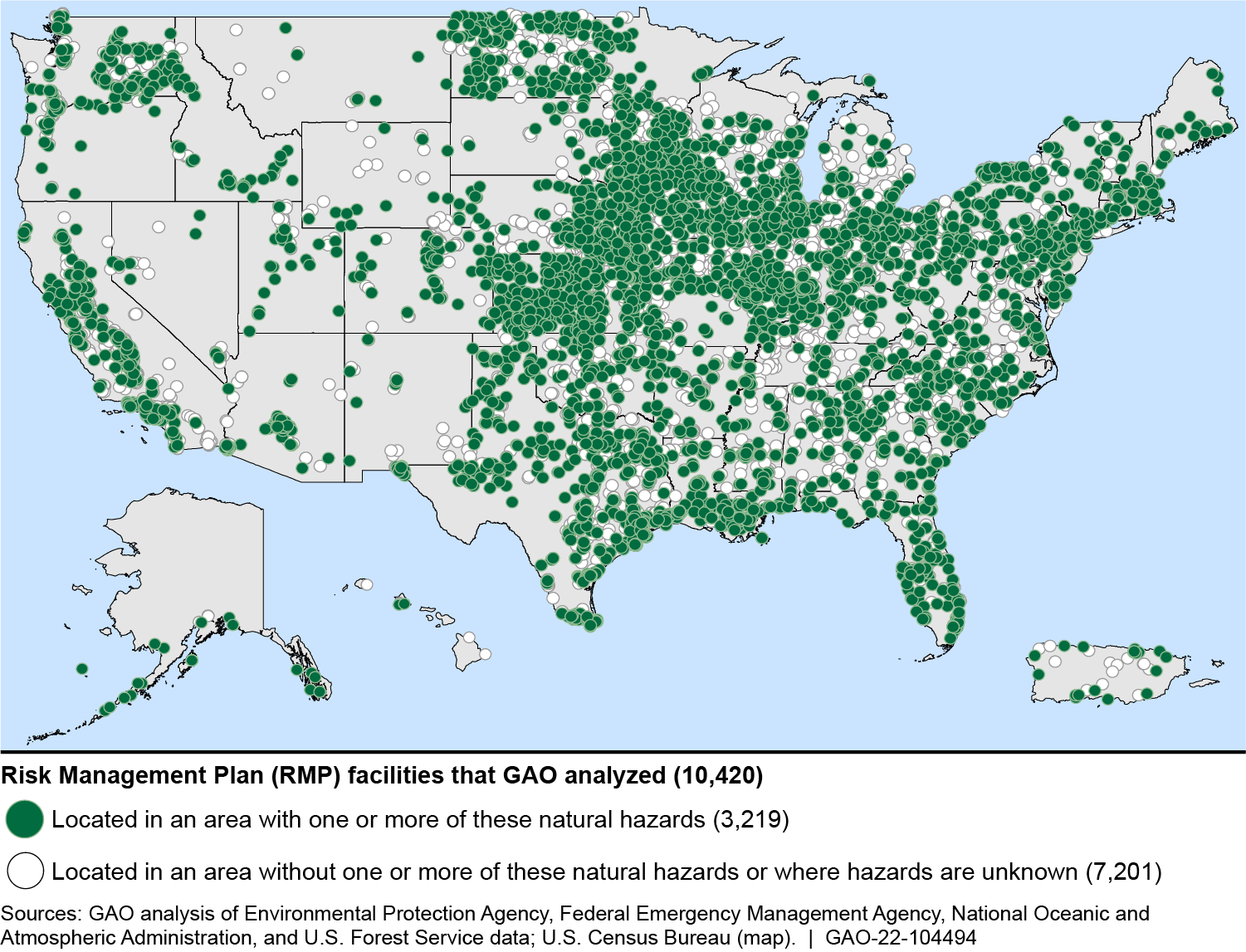The U.S. Environmental Protection Agency needs to do more to ensure that hazardous substance facilities are able to withstand the threats of natural hazards made worse by climate change in order to prevent accidental releases, according to a new report.
The Government Accountability Office found 31% of the facilities the EPA oversees under the Risk Management Plan Rule that are allowed to make, use, handle or store hazardous substances are located in areas threatened by natural hazards that could cause the release of those substances into surrounding communities, including here in Indiana.
Those natural hazards, including flooding, storm surge and wildfires, are happening more frequently and with greater intensity due to changes in the climate spurred by the release of greenhouse gases into the atmosphere at an historic scale, potentially increasing the risk of chemical releases at about 3,200 facilities.

“[R]ecent natural disasters have demonstrated the potential for natural hazards to trigger fires, explosions, and releases of toxic chemicals at facilities. In some parts of the U.S., climate change is increasing the severity and frequency of current natural hazards, such as flooding, hurricanes and wildfires, as well as accelerating the impacts of sea level rise, according to the [National Climate Assessment],” the report states. “The Chemical Safety Board has reported that as the rate of such natural disasters increases, the frequency of accidents at chemical facilities affected by those natural hazards might also rise unless appropriate actions are taken to strengthen the resilience of the facilities.”
According to the EPA, dozens of hazardous substance facilities, including steel mills, oil terminals, and agricultural chemical distributors in Indiana are located in areas with moderate to high flood risks.

A vast majority of the facilities that pose a risk to communities in Indiana are wastewater treatment plants, which, if flooded, could leak chemicals used to treat water or sewage laden with bacteria, viruses and parasitic organisms that could cause life-threatening conditions like cholera, dysentery or hepatitis.
Several dozen communities have already received millions of dollars in State Water Infrastructure Fund grants from the Indiana Finance Authority to address overflow issues, including several included in the GAO report, like the Arcadia Wastewater Treatment Plant and the Fort Wayne Three Rivers Filtration Plant.
The report finds that the EPA could help RMP facilities prepare for climate risks by providing the facilities with compliance assistance like data, tools and technical support and then issuing regulations and guidance on how to incorporate those risks into their risk management plans.
The recommendations come more than five years after a previous presidential administration attempted to make chemical substance facilities less susceptible to releases.
The EPA during the final days of the Obama administration passed an RMP rule revision crafted after a 2013 explosion at a fertilizer company in West, Texas that killed 15 people. The rule would have required many more companies to disclose potential chemical release impacts, plan for emergency response to releases and submit plans to the EPA.
The Trump administration delayed implementation of the rule for nearly two years and then passed a weaker rule revision in its place.
Since the Trump RMP revision was finalized, the U.S. Chemical Safety and Hazard Investigation Board has responded to dozens of explosions and chemical releases at plants across the U.S.
The EPA told the GAO that it is working on a proposal that would revise the RMP regulations to reduce the risk of accidental chemical releases, address the Biden administration’s focus on reducing climate change impacts and prioritizie environmental justice while incorporating some of the GAO’s findings.
The EPA said the rule is scheduled for publication in September 2022. It expects the rule to be finalized by August 2023.
A national coalition of dozens of environmental organizations supportive of tighter restrictions on chemical facilities said the EPA should work to act on the GAO’s recommendations in order to prevent “double disasters,” their term for natural disasters causing chemical releases, from affecting communities already burdened with pollution issues.
“The RMP needs urgent rule changes that will prevent chemical disasters from happening in the first place, offset growing risk posed by climate change and mitigate the cumulative health impacts from hazardous chemicals that workers and fenceline communities experience daily,” the Coalition to Prevent Chemical Disasters said in a press release. “Workers and fenceline communities face a severe and ongoing threat to their lives, health, and well-being due to major gaps in EPA's rules on hazardous chemical storage, use and industrial facility safety guidelines.”